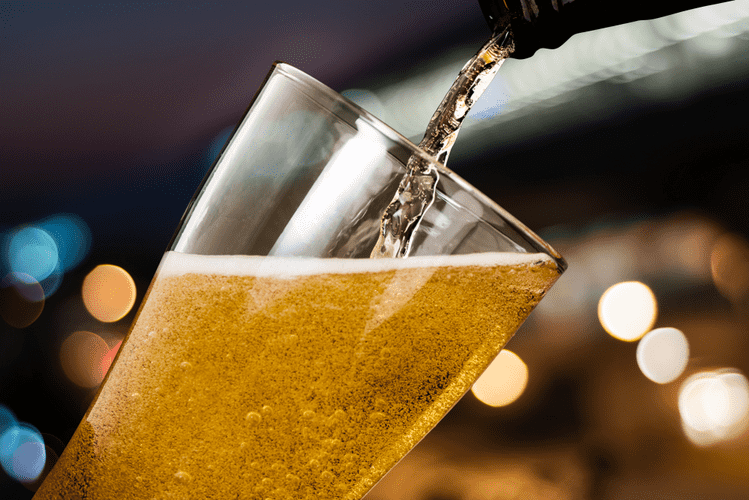Alcoholic Nose: What Is Rhinophyma?
Just like spicy foods make people with rhinophyma lare up, increased alcohol intake only makes rhinophyma more apparent. Medical professionals have found that rhinophyma develops when milder forms of rosacea, like ocular rosacea, are left untreated. There is some evidence that suggests genetic predisposition may play a role in developing rhinophyma. If you think your drinking habits are causing your alcoholic nose flare-ups, know that the best way to stop them is to quit drinking. For more advanced forms of rhinophyma, the most effective way to manage thickened skin is almost exclusively through physically removing excess tissue. Sometimes, this can include relying on ablative lasers or electrical currents (a treatment known as diathermy) to help remove excess tissue.
We can help find a detox or treatment program that will help get the services needed on the road to recovery. Alcohol is a vasodilator that can relax the muscles in the walls of blood vessels, allowing them to widen. This dilation and the common facial redness that alcohol commonly causes can cause the appearance of a reddish or purplish nose.
Common Misconceptions About Alcohol
It is essential to fully understand the patient’s concerns and consider the emotional impact of the condition on the patient. Attention must be given towards systemic treatment of rosacea and avoiding trigger factors to achieve symptoms control. Rhinophyma is commonly linked to chronic alcohol use, colloquially being misnamed ‘whisky nose’ or ‘rum blossom’.
- If you are a medical doctor, clinician, or other professional in a field related to this topic and find errors or inaccuracies within this content, please contact us at
- Rosacea affects the nose more in men and the cheeks more in women, which makes men much more likely to get rhinophyma than women.
- It typically manifests as a noticeably red, bumpy, or bulbous nose or swollen cheeks.
- Current research indicates that people with rhinophyma often have a genetic predisposition to or family history of rosacea, especially if treatments for their rosacea prove ineffective.
If you live in a very warm climate and suddenly move to a freezing, cold climate, this can trigger symptoms of a bulbous nose. Normal temperature changes do not appear to have any effects, but only the extreme ones. If you are among people who have a bulbous nose and also why do alcoholics have big noses love to indulge in hot, brewed coffee every morning, you might want to rethink that. This is because hot beverages like coffee can trigger even more grievous symptoms of a bulbous nose. Don’t let your addiction to alcohol keep you from getting the help you deserve.
Alcohol Abuse: What You Should Know
The name originates from the idea that heavy gin drinkers tend to develop this type of rosacea. This skin condition causes persistent redness and visible blood vessels on the face. Alcoholic nose is a slang term for a red, swollen nose that is thought to be caused by chronic alcohol abuse. Rhinophyma is a serious condition marked by an enlarged, overgrown nose. Rhinophyma is a type of rosacea, a chronic skin condition that causes inflammation of the face.

It isn’t necessarily healthy, but drinking in moderation is less likely to hurt you or cause long-term damage. Alcohol abuse, however, or heavy drinking, can have a number of devastating temporary and permanent effects on the body. For example, alcohol abuse is widely known to cause problems with digestion, liver failure, and alcohol use disorder. Although the actual cause of rhinophyma remains unknown, we know that it’s an extreme form of rosacea, a condition that causes the skin to experience chronic inflammation. As one of the worst types of rosacea, rhinophyma gradually develops over the years, eventually resulting in the red, bumpy, and inflamed appearance that alcoholic nose is known for. Although there is no such thing as a drinker’s nose, drinking alcohol, particularly red wine, can lead to flushing of the face.
Purple Nose Alcohol Nose Condition
At most, excessive drinking can increase someone’s risk of developing rosacea. However, it is not more or less impactful than any other risk factors, such as gender, age, skin tone, and family history. Likewise, not everyone with an alcohol addiction develops rosacea, either. Alcohol addiction can lead to a number of side effects, which may include affecting rosacea.
- At the minimum, a person with rhinophyma will have reddening or inflammation of the nose and cheeks.
- According to more recent studies, however, the definitive link between alcohol consumption and rhinophyma has been disproven.
- NEATC will always strive to offer the highest quality of care in the Northeast region, while priding itself on a foundation of integrity, transparency, and compassion.
Rhinophyma is not directly caused by alcoholism or regular alcohol consumption. This previously assumed connection was made since alcohol has been known to have a negative effect on the vascular system, enlarging vessels in the face and neck, causing reddening or flushness. An alcohol abuse problem can include binge drinking, having negative https://ecosoberhouse.com/ consequences such as hangovers with your drinking but continuing anyway, and drinking despite the desire to stop. From your initial assessment to discharge planning, our compassionate care staff will be there for you. Our care specialists are ready to assist with acute mental health crises and co-occurring mental health disorders.




